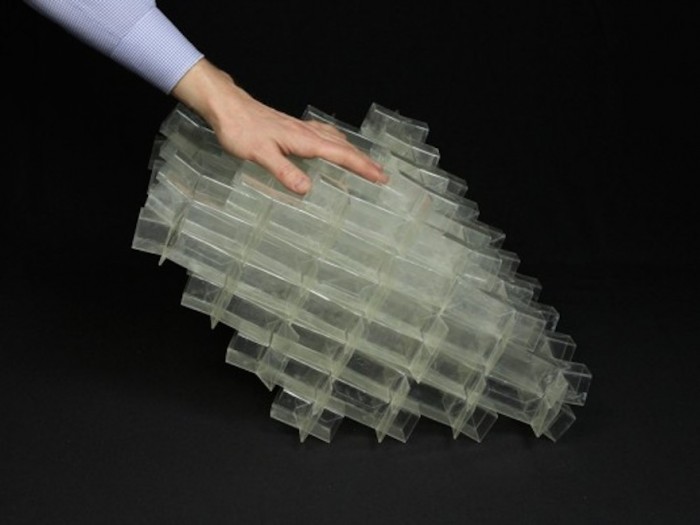
Harvard University engineers have developed an origami-based material that has the ability to change its shape, size and volume on demand. The material can be replicated in nano or metre-scale dimensions, meaning that it can have numerous applications, from improving surgical tools to paving the way for pop-up architecture.

The material’s design is inspired by a technique in origami known as snapology, which involves folding strips of paper into prisms to form complex geometric shapes. The structure is made up of a series of cube units with a total of 24 faces and 36 edges. The folded edges of the cubes act like hinges that can change the shape of the overall shape of the structure.

This structural design creates a dynamic material that is able to withstand the weight of an elephant without breaking and bounce back up to resume its shape after it’s been folded flat. In a demonstration, the team revealed how the cube can be transformed into many different shapes just by folding specific edges.
“We’ve designed a three-dimensional, thin-walled structure that can be used to make foldable and reprogrammable objects of arbitrary architecture,” said graduate student Johannes T. B. Overvelde.
The engineers believe that the material can open many doors for dynamic architecture such as adaptive building facades, portable shelters or pop-up domes for disaster relief.





